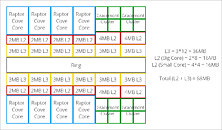
ASUS NUC 13 Pro Lineup Updated With Intel Raptor Lake-H CPUs
The ASUS NUC 13 Pro lineup of mini PCs has been around for a while, and has now been updated with new Raptor Lake-H CPU options. There do not appear to be any other improvements or changes to the systems, with the product continuing to be available in "tall" and "slim" variants. As one might expect, the tall variant has room for a 2.5-inch drive, while the slim variant relies solely on M.2 storage. Both the systems can be equipped with up to 64 GB of DDR4-3200 memory courtesy of dual SO-DIMM slots, and storage requirements are taken care of by an M.2 2280 PCIe 4.0x4, as well as an M.2 2242 PCIe 3.0x1 slot.
In terms of CPU options, the NUC 13 Pro mini PC lineup will now be available with the Core i5-13420H, and the Core i7-13620H. Both are 45-watt units, although the i7 variant sports two additional 'Golden Cove' performance cores allowing for a ~35% increase in multicore performance. The i7 also sports a substantially faster iGPU with 64 EUs (vs 48), although the Intel UHD iGPUs found in the Raptor Lake-H chips were never that powerful to begin with. The port selection has remained the same, boasting dual Thunderbolt 4, dual HDMI 2.1, triple USB 3.2 Gen 2, single USB 2.0, audio jack, and a 2.5G Ethernet port. Prices start at $455 for the NUC 13 Pro slim barebones variant with the Core i7-13620H according to B&H Photo Video's listing, and increase based on the chosen configuration.
In terms of CPU options, the NUC 13 Pro mini PC lineup will now be available with the Core i5-13420H, and the Core i7-13620H. Both are 45-watt units, although the i7 variant sports two additional 'Golden Cove' performance cores allowing for a ~35% increase in multicore performance. The i7 also sports a substantially faster iGPU with 64 EUs (vs 48), although the Intel UHD iGPUs found in the Raptor Lake-H chips were never that powerful to begin with. The port selection has remained the same, boasting dual Thunderbolt 4, dual HDMI 2.1, triple USB 3.2 Gen 2, single USB 2.0, audio jack, and a 2.5G Ethernet port. Prices start at $455 for the NUC 13 Pro slim barebones variant with the Core i7-13620H according to B&H Photo Video's listing, and increase based on the chosen configuration.

































































